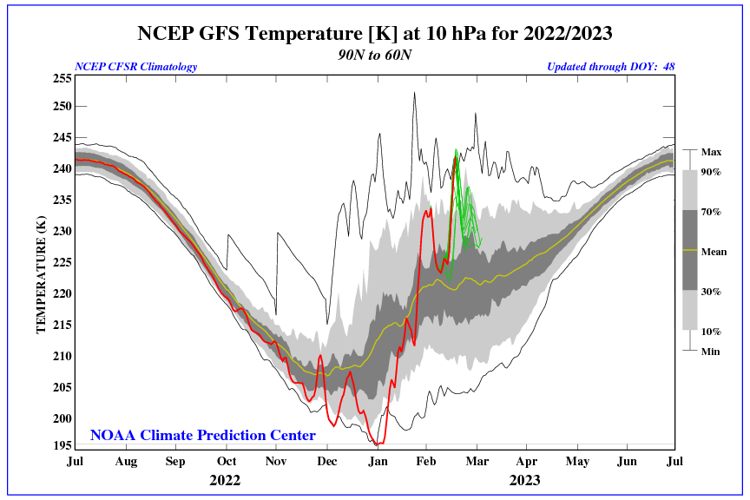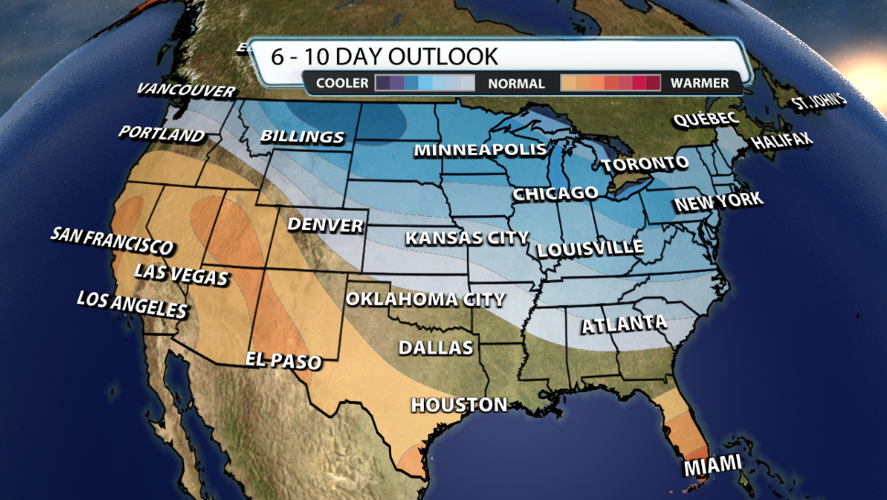You may have seen in the news that a Sudden Stratospheric Warming (SSW) event is occurring - what does that mean, and what are the potential impacts for Kentuckiana?

Courtesy: NWS Jetstream
The stratosphere is the layer of the atmosphere extending from ~6 miles to ~31 miles above the surface. The stratospheric polar vortex (we bet you've heard of the polar vortex!) resides in this area, and can significantly influence weather in the mid-latitudes.
The stratospheric polar vortex and tropospheric vortex are two different things. The tropospheric polar vortex is a normal atmospheric feature that affects our weather every winter. For the remainder of this post, we’ll be talking about the stratospheric one.

Courtesy: Climate.gov
A sudden stratospheric warming is a significant disruption of the stratospheric polar vortex that begins with large-scale atmosphere waves (called Rossby waves) getting pushed higher into the atmosphere. These waves can “break” (like waves in the ocean) on top of the polar vortex and weaken it. If waves are strong enough, the winds of the polar vortex can weaken so much that they can reverse from being westerly to easterly. This leads to cold air descending and warming rapidly, with the red line on the graph showing the sudden jump in temperature.

Courtesy: Climate Prediction Center
This can lead to a displacement or splitting of the polar vortex, so instead of cold air being locked above the polar region, it can push further south into the mid-latitudes.
The main uncertainty with these events is we don't know where exactly this cold air will end up across the Northern Hemisphere, so that's what we'll be keeping an eye out for in the middle of next week. We can say models have backed off from depicting an extreme outbreak of cold air for our region. The most likely scenario is the coldest air impacts the Northern Plains, Upper Midwest and the Great Lakes. Signs still point to a few colder than average days with the Climate Prediction Center giving Kentuckiana a roughly 50% chance of below average temperatures.

Courtesy: Climate Prediction Center















